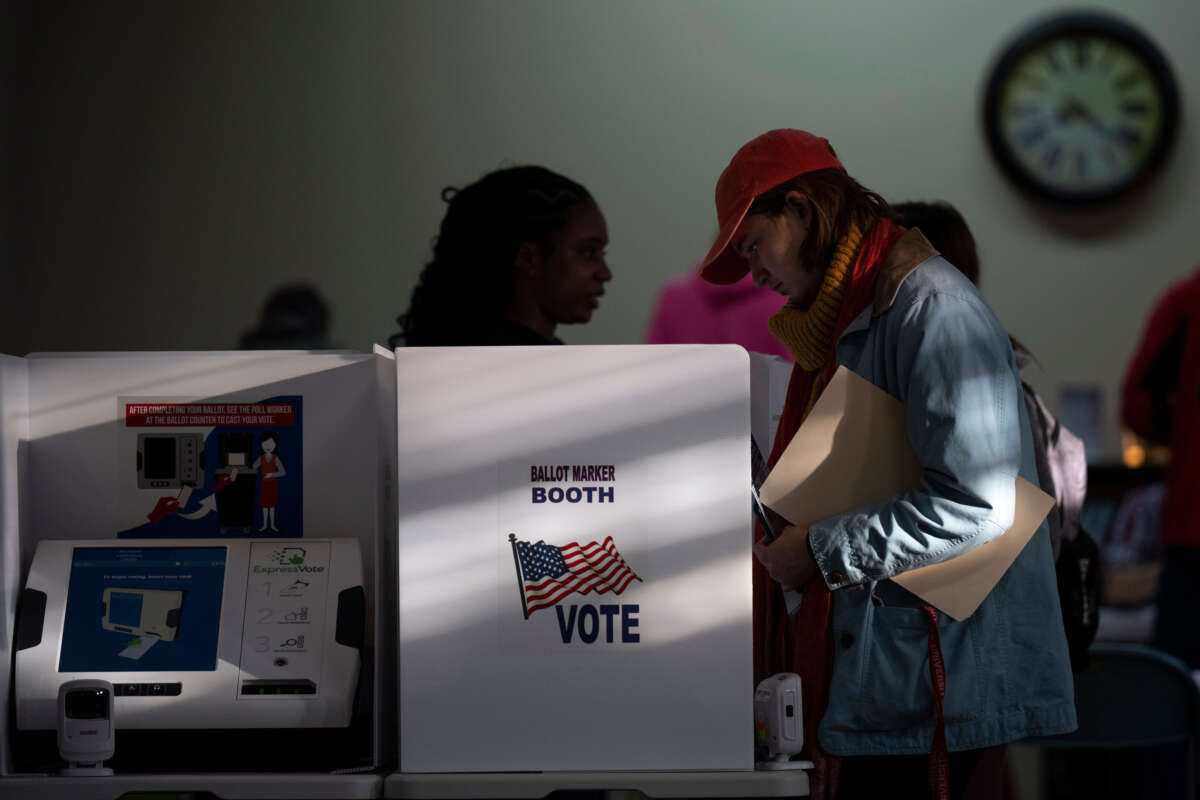Early voting in Ohio’s late-summer primary election began this week, with a major question on amending the state constitution included on the ballot. This has deep implications on how residents can shape their government in the future.
Voters were allowed to submit mail-in ballots or vote in-person starting at 8 a.m. this past Tuesday. Such primary elections are generally low-turnout affairs — the last primary election, held in 2022, only saw an 8 percent turnout, for example.
That fact is why so many are critical of the decision by the Republican-led legislature, earlier this year, to place a ballot question that could alter the state constitution, and make it more difficult for Ohio voters in the future to pass voter-led ballot initiatives.
Issue 1 on the ballot would require all future initiatives to reach a 60 percent vote threshold in order to be valid, beyond the current simple majority rule that’s in place. It would also increase the number of signatures ballot initiatives would need to garner from each county in the state, making it more difficult to get a proposed amendment on the ballot in the first place.
Republicans have not been shy over what Issue 1 is about — blocking progressive policies from being considered by voters statewide, including an abortion rights initiative that will be on the November ballot later this year. Senate President Matt Huffman (R) and other Republicans have readily admitted the measure is meant to thwart that citizen-led initiative on abortion.
More than 700,000 signatures were obtained for that ballot initiative, around 300,000 more than were necessary to bring it forward for voter consideration. The proposed state constitutional amendment would extend abortion rights up to the point of “fetal viability,” generally understood to be 24 weeks of a pregnancy, but also places safeguards to ensure a pregnant person can get an abortion any time their health or life is at risk.
The amendment would undo a 2019 “trigger law” in the state that bans abortion after six weeks of pregnancy, which went into effect after the federal Supreme Court overturned Roe v. Wade last year.
“Ohioans must be able to make our own reproductive health care decisions without political interference because abortions are not political; they are an important safety net that safeguards the wellbeing of all,” said Kellie Copeland, executive director of Pro-Choice Ohio.
Issue 1 would create an additional hurdle for that initiative to pass.
Several grassroots groups and newspaper editorial boards have spoken out against the proposal that’s on this August’s primary ballot, noting that the decision to put it to a vote now instead of in the general election in November seems strategic.
The editorial board for The Columbus Dispatch, for instance, said that the timing of the special primary election will “hit voters while they are not paying attention during the dog days of summer,” a point that GOP lawmakers, they say, were well aware of when they made the decision.
An information sheet provided to voters online by the progressive group Common Cause Ohio similarly blasts the measure as aiming to limit voters’ rights. “The ability for citizens to put issues before the voters was established as a check on the state legislature. Are our legislative leaders afraid of voters?” the organization asked.
Issue 1 could block voters from deciding on more than just abortion rights, many have pointed out, with the potential to block environmental protections as well as protections for the rights of LGBTQ people in the state. Big business groups, including the Ohio Chamber of Commerce and the state restaurant association, back the proposal, specifically endorsing it to help ensure that a raise in the state’s minimum wage cannot easily happen.
Press freedom is under attack
As Trump cracks down on political speech, independent media is increasingly necessary.
Truthout produces reporting you won’t see in the mainstream: journalism from the frontlines of global conflict, interviews with grassroots movement leaders, high-quality legal analysis and more.
Our work is possible thanks to reader support. Help Truthout catalyze change and social justice — make a tax-deductible monthly or one-time donation today.
